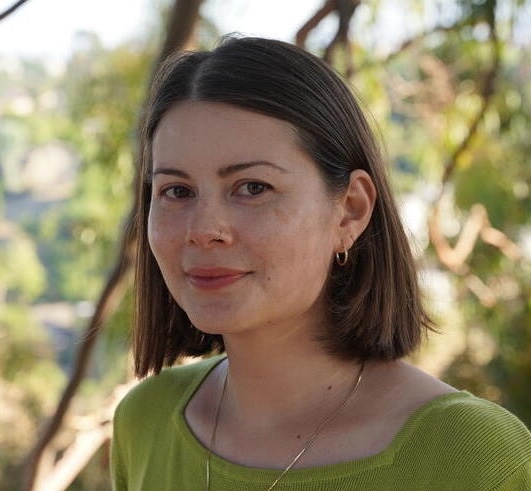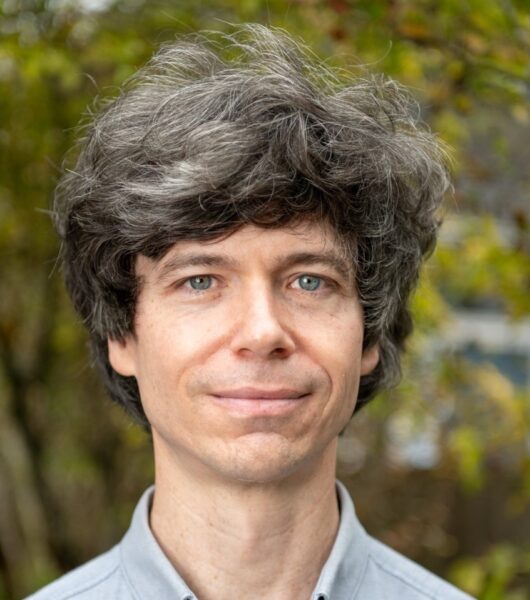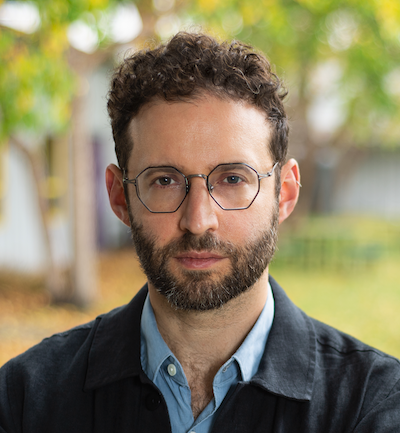The American election closed out a year of momentous elections. Almost two decades on from the financial crisis of 2007 that helped unleash a wave of authoritarian, populist, and nativist movements in global democracies, a range of social and political forces have reshaped political processes around the world.
What do the election results of 2024 tell us about the health or fragility of global democracy, and how might we better understand the outcome of the American election as part of a broader global process?
Recorded on November 21, 2024, this panel featured a group of UC Berkeley scholars discussing the 2024 elections, with perspectives from different parts of the world. The panel featured James Vernon, Helen Fawcett Distinguished Professor, History; Alison Post, Associate Professor, Political Science; Trevor Jackson, Assistant Professor, History; Aarti Sethi, Assistant Professor, Anthropology; and Kwanele Sosibo, Lecturer, Art History.
Presented as part of the Global Democracy Commons initiative.
Podcast and Transcript
Listen to the presentation as a podcast below or on Apple Podcasts.
[MUSIC PLAYING]
[WOMAN’S VOICE] The Matrix Podcast is a production of Social Science Matrix, an interdisciplinary research center at the University of California, Berkeley.
JAMES VERNON: Hey, everyone. Good afternoon and welcome. Thanks so much for coming on an utterly horrible day, which is maybe fitting for what we’re going to be talking about this afternoon. My name is James Vernon. I’m a professor in the history department and I’m the director of the Global Democracy Commons, which is the group on campus, which was organized this event. Now, it seems at the moment that every few weeks, we have an announcement launching a new initiative or program aiming to buttress American democracy and, dare I say, liberal understandings of it on this campus.
That’s not the purpose of the Global Democracy Commons. Our starting point is rather different. It is that the Euro-American model of liberal democracy has always been as much about containing the demos as emancipating it, and we are keen to remember the ways in which Euro-American democracy was always inseparable from settler colonialism, imperialism, slavery, and capitalism.
So while we’re interested in many of the issues that we’ll be talking about today, like the rise of authoritarian populism, neoliberal capitalism, and the planetary emergency, and the ways in which these phenomena have created a new crisis of democracy around the world, we’re also equally interested in the new forms of political mobilization unleashed by those phenomena.
We believe that some of these new forms of politics that we see arising around the world provide opportunities to realize the radical and unrealized promises of democracy to help us materialize a commons that could ensure our collective well-being. We aim to understand and propagate those approaches to democracy rather than believing scholars at Berkeley know best what democracy is or who should have it.
So the Global Democracy Commons is funding three collectives, which consists mainly of faculty, graduate students, and undergrads who are working with a variety of groups beyond the Academy to realize different histories, practices, and visions of democratic practice. The three labs at the moment have their work located in Guatemala, the Caribbean, and India. In addition, we have a Scholars At Risk program which is supporting the development of an English language version of the political diary podcast about Russian politics by the two elias Matvick and Brustofski, who are visiting scholars here at Berkeley.
And finally, we also have a monthly podcast exploring the way that universities around the world are being targeted as spaces of critique and protest, including, of course, here at Berkeley. All of these activities are traced on our website, demos.berkeley.edu. So please do get in touch if you’re interested in being involved or you want to discuss future projects. Now, let’s turn to why we’re actually here this afternoon, not to listen to me, but to listen to these wonderful people.
I hope it’s clear from what I’ve already said, that the Global Democracy Commons was not set up to study elections or to equate our understanding of democracy simply with the conduct of elections. Nonetheless, what a year we’ve had, and there have been some momentous elections all around the world, including in the largest democracies in the world, like India, Mexico, and the United States, all of which we’ll be talking about this afternoon.
In many ways, these elections allow us to see some of the ways in which political alignments and democratic practices have been restructured since the apparent global triumph of democracy in 1991 with the fall of the Soviet Union and then the financial crisis of 2007/8. So to make sense of all of this, we’ve put together these wonderful people, who I’ll now introduce. Let me just briefly say before I do that how this is going to work is I’m going to ask them a series of questions that they’re going to respond to.
They’ll be in conversation with each other. We’ll probably try and do all of that in the next half an hour or so. So there’s plenty of time for you to join the discussion, ask them questions, and for us to hear the ways that you understand the developments that we’ll be discussing. So I’m going to start. We’ll go down the row. We’re going to start with Kwanele Sosibo, who’s a freelance writer and editor, currently working as a lecturer at UC Berkeley’s History of Art Department. He’s a journalist by profession.
Sosibo started out as a freelance arts writer for various publications in Durban, South Africa, and he later worked at the Mail and Guardian in Johannesburg, covering beach ranging from labor to arts and culture. He was the arts editor at the Mail and Guardian between January 2019 and April 2022. Sitting next to him is Alison Post, who is an associate professor of political science and global metropolitan studies.
Her research, which has been funded by almost everyone on the planet, examines urban politics and policy and other political economy themes, including environmental politics and policy, regulation and business government relations. She’s the former chair of the Latin American Political Economy Network and the former president of the urban and local politics section of the American– section of the American Political Science Association.
Next to Alison is Trevor Jackson, who is an assistant professor of history and political economy. He’s an economic historian with research interests in crisis, inequality and occasionally catastrophe. So he’s well placed to speak here today. His first book, Impunity and Capitalism, is out from Cambridge University Press, and he writes about money, banking, and the financial crises for places like Dissent, The Nation, and the New York Review of Books.
And then finally, at the end, there is Aarti Sehti, who is an assistant professor at the Department of Anthropology and the associate director of the Global Democracy Commons. She’s a sociocultural anthropologist, primarily working in South Asia, and she has two projects on the go at the moment. The first examines cash crop agricultural economies to understand how monetary debt undertaken for transgenic cotton cultivation transforms intimate social and productive relations in rural society.
And she has a second project called Republic of Readers, which explores the relationship between reading, literacy, and libraries as sites of postcolonial democracy and citizenship. OK, I’m going to sit down and then get this conversation started. And I want to just go down the row here and briefly get everyone situated with the part of the world that you want to talk about this afternoon.
The outcomes of the elections in that country this year, who won and lost, and how far those results signal something changing or something staying the same in the political conditions. So I’m going to start with the momentous 30-year year test of South African democracy post-apartheid.
KWANELE SOSIBO: Yeah, so I think in a large sense, even as these elections were pretty momentous, I think one can kind of think of the situation in South Africa as largely unchanged as of now. I think the machinations of the election results, which for the first time saw the– which for the first time since 1994, saw the ANC fall below 50%, and not just below 50%, kind of hover at the 40% mark, kind of signals that something momentous is to come.
But the last 30 years have been basically characterized by a stasis of some sort in the sense that at the very beginning of 1994, the so-called post-apartheid period, the ANC found itself having to make many concessions in terms of with the former apartheid state and the interest that it represented, the population groups that were served by those interests.
And so, for example, CODESA, which took place in 1992, in which– from which came out a negotiated settlement, found it created a situation where mining, for example, land redistribution, mining, agriculture, and quite a lot of the financial sector remained in white hands. And that’s been a situation that it’s basically managed through the past three decades.
Some have characterized it as a compradorian sort of party, in essence, in terms of what it was handed and the maneuvers it could make largely because of larger geopolitical sort of happenings around the early ’90s and so on, the fall of the Berlin Wall and what that meant economically worldwide. So with it falling below 50% now, part of that is a manifestation of people’s frustrations on the ground.
But largely, it’s a part of it’s sort of internal erosion as well, which takes shape or is best represented here by the rise of a party called the MK, which styles itself after the moniker of the ANC’s liberation wing. Now, that party is now helmed by the former state president whose name is Jacob Zuma. So the party’s seemed to mushroom right under people’s noses, so to speak, right at the cusp of the election.
So it kind of took a lot of people by surprise, but maybe people who have been kind of watching the attrition of the ANC and its cannibalizing of itself internally weren’t surprised that this happened. So it’s unknown what the results of that will be because, in a way, it’s still partly a manifestation of the ANC just kind of going into disarray. But the rhetoric around this party has kind of caused a lot of people on the ground who are desperate for change to latch on to it as some kind of a vehicle that will take them there.
But obviously, local government elections are coming up in 2016. That’s where the chips fall. I think that’s where maybe we’ll start to see what decisive changes could take place, because what happened with this government of national unity in which the ANC was forced into coalition with the main opposition, which is a white-led party, the Democratic Alliance, was– and other smaller parties as well, was an attempt to circumvent this kind of rising up of the MK.
And I guess in Kwazulu Natal, where the MK is– actually stole a lot of the ANC’s ground and a lot of the other parties’ ground and almost got a 50%– 50 plus 1 majority, missed it by probably a couple of percentage points in that province as well, which is strategic and key because of harbors and so forth, the ANC was able to galvanize the other parties again to circumvent the MK, which only won 15% of the vote nationally.
But in KZN it represented a bigger threat. So they’ve been able to keep it at Bay. But nobody knows as of yet how that situation is going to unfold.
JAMES VERNON: Brilliant, brilliant. Thank you. Alison.
ALISON POST: Thanks. I’m going to be speaking a bit about the Mexican presidential election, which took place in June of this past year. What we saw in that election was the election of Claudia Sheinbaum, who is the hand-picked successor of the prior president, Manuel Lopez Obrador, commonly known as AMLO, from the Morena party. They want a very decisive victory against the PAN, which is the right of center party and a smaller left wing party. Presidential elections just take place every six years in Mexico, and there’s no possibility for re-election.
So this was essentially an election in which AMLO was anointing his hand-picked successor. And it was really a landslide, a landslide victory for Morena with 61% of the vote. At the time, Sheinbaum was the sitting mayor of Mexico City. Morena is emphasized as a left of center party in the Mexican context. At the same time, Morena won a really commanding number of seats in Congress, both in the legislature and in the Senate, and is now in a position to institute or pass constitutional changes following this election.
The results really signal continuity in the Mexican context. Sheinbaum is very much seen as carrying forward AMLO’s program at the moment. She hasn’t done anything yet really to indicate that she’s departing from that. Morena has been in power since 2018, so it’s looking like it’s going to be quite long run. Lopez Obrador had had very high approval ratings throughout his administration.
And now with this new increased control in Congress, the party is in a much better position to move forward with the program they have been advocating for since 2018. So AMLO has been an economic populist, pushing for increased role for the state in the economy, as well as for a movement towards more majoritarian control of political institutions for the country.
So he has been proposing, and these reforms are now moving forward in ways that we’ll talk about in subsequent questions that James has mentioned about unwinding and weakening alternative power centers outside of the executive. So things like the independent electoral commission, the judiciary, regulatory agencies, the press, et cetera.
JAMES VERNON: OK, thank you.
TREVOR JACKSON: OK, well, my remit is Europe. And I mean, one thing about Europe is there’s a lot of it, and it offers us a wide variety of different ways to think about failing. And so I think most of the– to kind of sum together many of the things that I’ll describe, I think we can imagine most of the elections over, not just this year, but the past few years in Europe as a repudiation of a prior politics rather than a coherence around a new one. Just by way preface, I think I would also say that as far as I could tell today, since 2021, there have been 54 national elections in the world, and in 40 of them, the incumbents have lost.
Even among those that the incumbents haven’t lost, there are different ways to lose. So one such example is the case of France, where Ensemble, which is, I think, the third rebranding of Emmanuel Macron’s party that he invented a few years ago, remains in government. But absolutely, every interpretation of that election is one of a repudiation of his party. In the first round, his party came third behind the front popular and behind the right wing coalition.
The actual election was the result of 311 constituencies having three or four candidate run offs, which is the most that has ever happened. And so his party was able to survive, but only through a series of tactical voting, largely on the side of the left to keep out the far right, thanks in no way at all to Macron’s own. So, OK, there’s a case of an incumbent staying in, but it’s still clearly a repudiation of his politics.
The other political story of 2024 was, of course, in Britain, where after 14 years of utterly murderous misrule, the Tories were annihilated and wiped out to their lowest level, I think, in the history of the party. Keir Starmer, the leader of Labor, has already seen his approval ratings utterly collapse. This was a repudiation of the Tories, not so much a move towards some sort of durable new Labor politics. If we’re able to step back a couple of years, another example that we might point to is the case of Italy, where Mario Draghi, former Goldman Sachs executive, MIT economist, chair of the European Central Bank, had led a government that he was appointed to.
They were wiped out. And now Giorgia Meloni is the leader of the Brothers of Italy Party, which has emerged as the largest party in Italy. They are an explicitly far right, xenophobic political party. Somewhere like Spain, the government survived, but at the cost of completely restructuring the governing coalition. Germany has been the great exception to the story of instability in European politics over the last couple of decades. And we have just now seen their governing coalition collapse, and they’re going to have elections next year.
So a great deal of instability. And I think maybe to pick on a couple of already obvious threads, a story in which attempts to form coalition governments have unraveled and a great deal of difficulty reconstructing some sort of political center.
AARTI SETHI: So I am going to talk very briefly about India, as we– this was a very, very significant election for many reasons. It was an election following on the last two elections in which the Bharatiya Janata Party, which is the party led by the current prime Minister Narendra Modi, had won– had done what no party had been able to do before him for the last two decades, which was an era of coalition politics in India, and had managed to take his party, the BJP, which is a far right Hindu nationalist party, to a kind of landslide victory in the parliament.
India has 543 seats, and so the BJP emerged as the single largest party in both those elections and which means that it could rule singlehandedly without the support of any other parties, which has been rare, which has not been the case in India for the last 25– 20 years, actually, almost three decades. And so it was very much an election.
And these last 10 years have consolidated Modi as a populist, charismatic leader, as a leader who, in a sense, goes it alone, much like Trump, where the party falls in line behind the leader, as a man who is able to command a kind of cross caste, cross class presence, someone who has concentrated the power of the executive into himself.
And he’s widely credited with, in a sense, running a parliamentary democracy, like a presidential– like a presidential system where he is where, in a sense, not just material power has concentrated on the prime minister’s office, but also symbolic power in the figure of Modi. And so this election was touted as one in which Modi would prove after Nehru that he was going to be the first prime minister after Indian independence, after Nehru, the first prime minister of India, who would win a third term and be in that sense, the longest running prime minister of India.
And that has happened, but certainly not in a way that the BJP expected. All exit polls, basically, which turns out were rigged, predicted a kind of landslide victory for his party. But that landslide victory did not happen. The BJP has come back to power. He is the prime minister, but the BJP and its allies suffered a very decisive blow. So the BJP has come back to power, but they have had to come back to power in a coalition government for the first time since they have come to power in the center.
And more importantly, and what is significant about the election is that it has dented– and this is probably its biggest gain– it sort of dented Modi’s image as an invincible man who cannot be defeated, because that is what the last 10 years of Modi rule seemed to suggest, that he is a kind of Teflon prime minister, that nothing he does can shake his sort of preternatural hold over the mind of the Indian electorate over the Indian polity.
And so this kind of shock and awe mode of running a government where the mishandling of the COVID crisis, the demonetization of the Indian economy, the successive worsening of the living conditions of most Indians, the extraordinary exacerbation of social inequality, the kind of crony capitalism, intense corruption in the government, that all of this– despite all of this, Modi’s kind of charisma is unshaken.
And what this election has done is to shatter that. It is to basically say that Modi is not a prime minister who cannot be defeated. And so prior to the election, he made the claim that he was fighting– There? Are 543 seats in the parliament, and that he was personally fighting on all 540. And so when the BJP has lost, and it especially lost in some of its key holds in the North, it’s seen as a moral defeat of the prime minister.
And that, if there’s anything that has been achieved, we don’t know actually what the long term outcomes will be. But this is– it is significant. It’s significant for this kind of reason, the sort of symbolic shattering of Modi’s power.
JAMES VERNON: Great. That’s brilliant. And we already have lots of overlapping themes between you, which is really great. So let’s try and make sense of these shifts that you’ve all been talking about, which with the exception of Alison and Mexico, seems to cohere to this story that Trevor was suggesting of a sort of revolt against the incumbent. Yeah, however entrenched in power they are as the ANC or the BJP.
So what’s your reading of how we understand that type of revolt, if it is a revolt against an incumbent? Are we thinking that this is– that there’s a political analysis here, which is about people’s exhaustion or loss of faith in the institutions of government and of democratic processes in and of themselves? Or the other frequent explanation proffered here is that there’s a materialist explanation, which is people are hurting, whether you’re in a country that produces stuff or you’re a country that consumes stuff, you’re not having a great time.
And so there’s a clear attempt to vote people out of office because people are having an economically hard time. I’m interested in how you would all try and figure out what’s happening, both in your own cases and in others. And because Mexico seems to be the sort of exception in terms of the incumbent revolt, let’s start with Alison.
ALISON POST: Yeah, I mean, you could even think about AMLO’s victory in 2018 as representing perhaps that shift that you’re describing. So the 2024 election really was kind of an endorsement of– a popular endorsement of the approach that he had been developing over the previous six years. The Morena’s support base is comprised primarily of the working class, younger people, rural areas, Indigenous populations, as well as those who had placed themselves on the ideological left.
So in some sense, this is a support of that program, of those groups. His overall policy program has focused on addressing poverty. And in fact, a number of new social programs were rolled out that contributed to satisfaction with his performance, although in comparative terms, I would say the Mexican economic performance has really been middling and hasn’t been by any means outstanding in the Latin American context in his administration.
But in particular, the rhetoric that Morena has used and that AMLO has used is really sort of an anti-system rhetoric that maybe we could tie to these other cases. So it’s very much of a us versus them. We are the masses versus the elites type rhetoric, which he exemplifies in his personal style refusing to use the presidential plane, reducing salaries, his own salary, those of top bureaucrats, railing against the conservative media.
And then looking for ways in which to elevate popular opinion but in a way that is not necessarily systematic in the same way that we might have an election. So for example, structuring ad hoc referenda on public projects and then canceling them. So for example, there was a long running construction project for a new airport for Mexico City. They put that up for referenda.
It didn’t win, and so they went to instead expanding an existing military airport instead. So arguably, taking decisions where the public didn’t necessarily have full information, putting it out to public vote, et cetera. He’s also elevated, very visibly, the role of the state vis a vis foreign investors. So strengthening state-owned enterprises by restricting opportunities for foreign investors in those areas, sometimes in ways that conflict with his own government’s environmental objectives.
So, for example, giving more control to the state electricity monopoly in the generation space when it was foreign investors bringing in the green investment into that sector. But the kind of broader picture is consistent with this kind of anti-system, anti neoliberalism approach that represents a repudiation of prior approaches.
And I’d say the final example of that is turning to the sort of an emphasis on nationalism that we see in things like turning to the military to perform functions that wouldn’t necessarily have been traditionally performed by the military, like managing public works projects or turning the war against cartels away from state level or municipal police officers to the military.
JAMES VERNON: Brilliant. Kwanele, do you want to talk about where you think that the– taming is the wrong word, but the shrinking of the ANC base, what’s motivating because it’s been going– this isn’t the first election. It’s been a progressive policy– a progressive trend, but this election seems to have been a decisive moment. And I’m wondering if you have any thoughts about what’s driving that.
KWANELE SOSIBO: I think we can think of what’s happening as a nannying of the ANC in some way because the coalition sort of called the Government of National Unity, largely supported by the DA, which is the biggest opposition party, the white-led party with the large white constituency.
So I think in a sense, like the ANC’s lack of controls over its cadres, which it’s deployed in various government departments and so on. And that sort of deployment of cadres was a way of dispensing patronage within the party. I think that sort of deteriorated through a lack of accountability and a lack of recourse to people who were plundering the public purse.
And, of course, ANC factionalism also led to a further entrenching of patronage as a system of keeping factions in place. But that lack of governance also allowed, I think, private sector interests to thrive in the health sector, in the education sector, in the energy sector. So it was kind of good for business interests that the ANC kind of was in collapse.
A couple of years ago, I think maybe probably 15 or so years ago, there was the emergence of– with the emergence of Jacob Zuma, who kind of– I think, his presidency represented a little bit of an upsetting of that cozy relationship between ANC and business to some extent in the extent that he allowed new people to enter the fray. Much has been made of his relationship with, for example, the Gupta family, a kind of oligarchic family from India with interests in different parts of the world.
Much was made of how that was a kind of a steep descent into the pilfering of the public purse for personal interests and for interests of this family. But that represented a kind of– maybe a departure with cozier relationships, say, with established capitalist interests with Mbeki and so forth. So I think, by and large, that led to a capturing of very key strategic resources in the country, and they fell into the lap of Zuma and his cronies.
And so what I think you have with the emergence of Cyril Ramaphosa in 2017 is an attempt to remedy that, to steer it back to the usual course, which, by and large, kind of overarchingly structures this relationship between the ANC and business and obviously has colonial roots in and of itself. So I think that’s maybe how you could characterize the GNU in its current state.
But what you also have is because of this lack of governance is huge agitation on the ground from the poor masses and so forth. And that has tended to take the form of xenophobia. Like, for example, everybody, everybody, every party smaller than the ANC campaigned around xenophobia. And xenophobia in the sense, it takes on many forms. But one of the form it takes on is it’s obviously brought on by corruption within Home Affairs, which allows the borders to be porous in a way.
So this large influx of people from the SADC region and in fact further afield even provides a very sort of cheap labor pool, which– and I think in the South African case, it’s not a case of people at the bottom of the economic ladder don’t want to take on these jobs. It’s more like these people are open to be exploited by South Africa’s largely very developed, sort of capitalist markets, which can absorb them into service industry jobs.
And they get exploited quite treacherously. But the capitalist class obviously exploits this. But I think it’s also now coming to bite because it’s obviously starting to lead to huge, huge tensions on the ground. So I think that would be a characterization, I think, at this point, yeah.
JAMES VERNON: Great. Trevor or Aarti, do you want to comment?
AARTI SEHTI: So one of the interesting things about this election is that the way it’s being read by commentators is that economic issues are back on the table in a very big way. And what Modi’s kind of rise to power had seemed to do was to consolidate– and this was his kind of creativeness as a politician, ever since his days where he began as chief minister in Gujarat, was to consolidate a Hindutva, a kind of Hindu identity, which was a cross caste identity.
The political scientist Christopher Jaffrelot, has a very persuasive reading of the rise of Hindutva. And he has essentially– has this description, which is that from the 1990s onwards, one can look at the terrain of Indian political life as a kind of contest between middle and lower caste assertion, a kind of democratization of Indian politics and the Indian political field that happened after the demise of the congress.
And the mandal, which was a kind of reservations for middle for middle and backward castes in jobs and government jobs and government educational institutions and so on in the early 1990s, where a new constituency actually entered into the structures of Indian political life, who had, in a sense, been marginalized through the era of Congress dominated politics.
Which the Congress party was– post-independence Congress party very much was a kind of clientelistic umbrella party which worked through local landed interests across the country. And this shattering of Congress dominance through the 1980s and this new kind of democratization is where then you have the era of coalition politics beginning. You then have liberalization.
And this upsurge of these middle and backward castes was viewed with a great deal of worry and anxiety by the RSS and by the BJP, who have– whose entire political kind of project is based on creating a seamless Hindu identity. And that Hindu identity has been created through all kinds of mechanisms, extraordinary polarization of public and social life, the continuous demonization of Muslims and minorities, Christians.
The kind of tentacular efforts of the RSS and all of the BJP-allied Hindu organizations through society. All of this created a– very successfully, Narendra Modi was able to exploit this Hindu– this kind of massive rightward movement of Indian polity along with these new aspirations brought on by liberalization in which the economy opened and opportunities expanded, but for a very small elite.
And all of this sort of comes to a head in the mid decades of 2014, by which time you have a lot of disaffection among many classes of people against an incumbent Congress government, which is seen as having created jobs for a small minority along– and Modi is able to mobilize this resentment and cast it in this– alongside this very potent cocktail mix of Hindutva and class and caste resentment.
That has, in a sense, shattered. And it’s shattered because over the last 10 years, this mix, in a sense, has– the limit of that kind of politics of his has been made evident now in this election, which is that this cross caste identity that the BJP had created has– caste is again back on the table in a very big way.
So all of this rhetoric of India moving forward– because this is what got a lot of people to vote for him, this idea that he is an outsider against the elitism of the congress, that he’s a man of the people who comes. He’s a speaker. He’s a doer. He is– connects with the dreams and aspirations of ordinary Indians against these elite– the elite of New Delhi and the Congress party.
His cozying up to big business, all of this created a– has, over the last 10 years, alienated very large numbers of people. And so the social compact that he had managed to create, The contradictions of that social compact, of radical joblessness, of crony capitalism, of– and so his rhetoric this time, which was one of the most communal campaigns India has ever seen, didn’t work.
And so even though the entire campaign of the BJP was aimed at stoking kind of resentment against Muslims and minorities, people finally voted again, in a sense, in a normal way, which is that people voted on what are called pocketbook issues in India after, we could say, 10 years of aberrant politics. Now, whether that sustains, we don’t know. But that’s the kind of broad terrain.
JAMES VERNON: So, Trevor, how does the nativism in Europe align or misalign with the material challenge of– challenges there?
TREVOR JACKSON: Well, so I think three things about this. And the first is that I think we are now something like 15 years into a giant global crisis of political legitimacy that I think I imagine will get to the fallout of the 2008 crisis, but that, I think, began then. And that has had the effect in some cases of a crisis of political legitimacy of politics as such or of political systems as such.
But I also think that it means that legitimacy has been up for grabs and that– on to the second point, that legitimacy seems to have been something able to be seized, not necessarily by new political movements that reflect existing material divisions, but that are able to reconstitute or reinvigorate or create new forms of political subjectivity, that we’re seeing the emergence of new types of identities that are able to be articulated, almost all of which have turned out to be exclusionary and xenophobic and racist in some way.
And it seems to me that most attempts at the creation of a new– well, of egalitarian universalist left political subjectivities have been defeated, either through the complicity of the center with a far right or perhaps because they’ve sometimes failed to articulate a new vision that they’re trying to, like, recreate a left subjectivity from some moment in a lost past rather than recognizing the current situation. And so it seems that there’s been a much more successful effect around constituting new political subjectivities that are in some way exclusionary and xenophobic.
That does and doesn’t map on to the actual material inequalities and realities. And that brings me, I think, to the third point, which I’m a historian, I’m going to reference books from the past, in his 1993 book, Politics and the People, our chair of this panel proposes that we can think about elections as a kind of text to be read and a text that is written. And it’s a text in which voters act out some imported melodramatic narrative that they think that they’re living through.
And one such narrative possibility is a romance, and not a romance in a, well, romantic sense, but a romance in the sense of some self-fashioning and overcoming the constraints of society, the kind of hero’s journey. And it seems to me that political movements that have successfully implanted themselves in that way have won in ways that others have not, that the performance of not being bound by social rules seems to be something that voters respond to.
And so we get these weird things where these political leaders seem to be able to do things that we would have otherwise would have thought to be impossible and seem to not face consequences for things that we would have previously thought would have been annihilatory, but nevertheless, there they are exactly because the performance of not being bound is something that seems resonant to people.
JAMES VERNON: Yeah.
AARTI SEHTI: I completely agree with you, Trevor. And what is interesting about the rise of the BJP– and I would really be interested to hear what others who are working on these other– in these other contexts, Mexico, South Africa feel about this– in India, we’ve seen in the last 10 years or– yeah, in the last 10 years, I would say, a massive transformation in the imagination of the relation between the state and people.
Till about the early 2000s, there was this kind of rights-based framework had emerged in which the state welfare was part of the social compact of citizenship, this is kind of Yamnaya. She writes very interestingly about social policy in India, and she has this– she’s written this very interesting paper where she talks about a kind of new techno patrimonialism as the mode now of– and this is what we see in India– where it is not– it is because the post liberalization economy has been so unequal and has left out most sections of Indian society.
India is one of the most unequal countries in the world. Only like 10% of the population controls 77% of national wealth. And 1% of the population controls 40% of national wealth. And so. This kind of India’s kind of growth story of 7% GDP growth a year and so on is one that has essentially been a jobless, unequal kind of growth.
Now, the response, strangely, of the state– and it’s not strange, it’s an interesting development– is that instead of investing in the creation of public goods like health, like education, skills, infrastructure, there has been– and this is the kind of rise of this whole technology, that the state now relies on cash transfers to the poor, what are called direct benefit transfers.
So the people no longer are seen as rights bearers who have a claim on the state, but as beneficiaries of targeted schemes, women, youth, unemployed. So the people now are a population of direct– of beneficiaries, which in a sense, flows from the generosity of the leader.
And it is in this context then that Narendra Modi’s charisma also for the last 10 years has devolved on this intense publicity of him as the paternalistic leader who gives the Indian people things his face on every COVID certificate, his face on every scheme, cooking gas subsidies for Indian women, and so and so scheme for Indian youth and so and so scheme.
It’s this kind of scheme-driven politics where everything seems to flow from the paternalism of the leader in this kind of technocratic mode of governance. And all of these bureaucrats who see themselves as technocrats. What this election was interesting was that lots of people began to say, I don’t want 2,000. rupees What am I going to do with 2,000 rupees?
I don’t want 5 kilos of grain. Like, 5 kilos of grain is not going to feed my family for even a month. I want a job. We want a job. Why don’t they fix Health Just one last thing, if you look at the career of a party called the Aam Aadmi Party in Delhi, which came out of nowhere, it’s kind of civic party that came out of nowhere in the last 10 years, what they did was they said, we will fix schools and we will fix education.
And so that’s what they did. They fixed the schools and they fixed the education, and they have managed somehow to retain power at the level of the state because they have articulated a kind of welfarist agenda in the face of this decline of welfarism and the rise of this kind of techno patrimonialism what I would be interested to see post this election is if this older imagination of the state and citizens as having a right on the state for the creation of public goods has a way to make–
If that is again a political– if parties can continue to win– begin to win on a welfarist agenda again as opposed to this kind of technocracy that has come into being under Narendra Modi, where it’s personalized and himself and he has this direct address through cash benefits to individual voters.
JAMES VERNON: I’m going to ask you one last question, you all, because I’m conscious of how quickly the time is. So let’s try and keep it brief. And it’s really to pick up on the election that we’ve all just lived through in the US, where the rhetoric of the crisis of democracy was claimed by all sides. And this seems to be a common feature in all of the elections we’ve seen around the world, that democracy and the protection of democracy is variously interpreted but constantly articulated.
And so I wonder whether you have any thoughts about what’s actually going on there and whether there’s anything useful that we can say about the way in which democracy is invoked to defend what’s up for grabs.
KWANELE SOSIBO: Yeah, I think, firstly, to just to Aarti and Trevor, the romanticism around Zuma is kind of that he’s also been indestructible and he’s emerged after all of these attempts to go for his jugular and he’s emerged victorious. I think that’s part of his popular appeal. But to talk to the crisis of democracy, I think in South Africa, it often feels like the populace, voting or non-voting, it’s often been characterized by large so-called apathy.
But I don’t think it’s apathy. I think it’s really people grappling at where to go and what to choose, given the options that they are facing. It often feels like nobody is really up to the challenge of what the society presents and everybody is kind of using. Electoral politics as a way of looting the fiscus and kind of re-emerging as the singular political figures.
So I think, like 2021, when there was a looting sort of spree that was sparked by Jacob Zuma, kind of absconding from the state capture commission of inquiry, where he was kind of like being brought to account for the plundering of the state through this cronyism and his association with this oligarchic family that had entrenched itself into the South African state, I think what we witnessed there was one man’s ability to mobilize millions of poor people.
And the death toll of that event, which a lot of people forget, was in the region of about 500 people or so. So it was kind of on the scale of June 16, 1976, when young people were actually marching on legitimate grounds and catapulting the downfall of apartheid. But here you kind of have this party hemorrhaging from inside, and it leads to such a dastardly catastrophe, which kind of reshaped society in immeasurable ways.
It kind of brought to the surface racial tensions that had been simmering for a long time and going unchecked. It also brought into to the fore the enclavism that is at the heart of South African society, you know, the rich can always retreat to estates and big fenced walls and are armed to the teeth and they can kind of emerge and wave their guns when the situation calls for it.
And when you look at what do people have to gain and what gains do we have to show for 30 years of democracy? It’s really like next to nothing, yeah.
JAMES VERNON: Alison.
ALISON POST: Right. So I think in the Mexican case, what we see are two– this is simplifying, of course– but two quite different views of what constitutes democracy and how to achieve it. And we need to think about that against the backdrop of 20th century Mexican history, which was characterized by essentially one party rule within the context of regular elections where the PRI was always going to win. That was clear to everyone. You had opposition parties running, but the electoral victory of the PRI was just always understood that was going to happen.
And for a while, as a big tent party, they spanned much of the ideological spectrum. And it’s as you move into the 1980s with neoliberal reforms that you see these divisions developing between the technocrats who are educated in economics departments, the United States and the more traditional politicians. And at that point, you have a left of center party that breaks off. AMLO is one of the leaders in that shift, that party system, and then to eventually transition a Democratic transition in 2000 at the National level in which the center right party wins against the PRI.
And during that period of one-party rule, things like the press were not independent. I mean, they were on the payroll. Most major journalists were on the payroll of the party. Fraud was used, not always– it wasn’t used in a way often that was decisive in elections. The PRI typically won the majority of the votes outright and just padded it a bit so it looked like an overwhelming victory. But there’s a history of a sense of democratic institutions aren’t necessarily Democratic, particularly in a context with very high levels of inequality historically.
And then López Obrador in particular has a number of unsuccessful runs for the presidency before he actually wins. And he is convinced that there has been fraud, absolutely convinced that the National Electoral Institute did not administer the elections fairly. And so he builds up a new party that’s coming from a grass roots, more of a grass roots base to essentially challenge the existing system.
And so now what you see is this tension between that view of democracy, which is very much we need to challenge the existing institutions and party structure because they’re associated with this old regime with elite control, et cetera, with another vision, which is championed more by members of the middle class, educated groups, professionals, et cetera, which actually has a lot of faith in the institutions that have been developed post-transition.
In particular, this National Electoral Institute, which was pivotal in terms of facilitating the transition from one-party rule to democratic competition post 2000. And so now there are a set of constitutional reforms, some of which have already gone through, others of which AMLO simply proposed prior to leaving office that represent shifts or potential shifts from the sort of view of democracy that involves checks and balances and independent institutions kind of constraining each other towards a more majoritarian system, which is what AMLO and his movement is moving for.
And so things like. do we popularly elected judges rather than have them be chosen on the basis of professional experience and these sort of things? And that has recently gone through the Supreme Court, the move towards popularly electing all judges. They have just– in October, a new constitutional change went through that stops courts from reviewing legislation passed by Congress. And so there are a number of other proposed reforms, things like taking all of the independent regulatory agencies and moving their functions to line ministries, as well as taking–
Making the electoral officials within– basically changing the institutional structure for managing elections such that electoral officials are elected rather than being kind of an independent board that oversees elections. So it’s a lot of shifts that are kind of removing checks and balances that have certain constituencies very concerned. So just these two very different competing notions of what constitutes democracy against a very difficult history in which you really had elections, but they weren’t really free.
JAMES VERNON: Either of you want to have a very quick word on this?
TREVOR JACKSON: Just very briefly, one of the striking things about the past few years is that although there’s a great drama of these incumbents losing elections and a lot of the characters are kind of larger than life, that obscures the way that many of these elections are the result of very low turnout and some large degree of democratic disaffection. So, OK, there’s a dramatic shift in Britain, but that was the lowest turnout election thus far this century. And Giorgia Meloni comes to power in 2022 in Italy, and the lowest turnout election in post-war Italian politics.
And one way of reading the 2024 American election isn’t that it was a stampeding victory for Donald Trump and the Republicans. It was that it was a turnout collapse for the Democrats. And I think we’ve probably talked a lot, you’ve probably read a lot and heard a lot about all of these shifts of different demographic groups from Democrats and Republicans. Well, that’s a shift of the people who showed up to vote. And another way of reading this is that a whole bunch of people who showed up to vote in 2020 didn’t in 2024.
And one way that we might interpret that, which kind of picks up on some of the elements of my co-panelists here is that, well, look, the Democrats were trying to put together a coalition that, in their words, ran from Chomsky to Cheney. Well, that is itself already a failure of some sort of Democratic process to set aside the formalism of the Democratic process of not having a primary season.
If you’re in that kind of world, at some level, repudiation of that is a repudiation of a larger set of Democratic failures that have already happened and, I think, a repudiation of a willingness to believe the claims of the threats of democracy being in peril, that I just think if the Democratic Party genuinely believed that Trump was the end of American democracy, they would not be or, at least, should not be handing over the reins of power and authority in the way that they are. And so that makes me think they just don’t take it seriously.
And if they don’t take it seriously, well, then it’s hard for me to be mobilized to a politics that then would put me in the same political party as, like, a Bush era war criminal.
AARTI SEHTI: I mean, the–
JAMES VERNON: Very, very quick, Aarti.
AARTI SEHTI: Yeah, very quick, India is actually a intensely multi-party system because it’s a federal country and there are very, very strong regional parties. So very quickly, one of the things that happened in the last 10 years with the Modi regime was it appeared as though federalism is under great threat, this kind of enormous centralization of the polity. And what, again, this election is doing is hopefully reigniting and creating, again, a kind of coalition government where the BJP will be forced now, we hope, to be in coalition with strong regional parties.
So that’s one thing that is unique about India is the fact that it is a multi-party system. There are very strong regional parties which the party at the center has to make compacts with. The Modi era was, again, an aberrant era after the Congress, that is, where they didn’t have to do that. And I think Democratic opening will hopefully mean that this era of coalition governments actually comes back again.
JAMES VERNON: Great. We have time for questions, and I have a mic that you have to hold in order to ask a question. Does anyone have a question? And do us a favor and tell us who you are when you ask your question.
AUDIENCE: Hi, I’m Nat Arutasi. I’m a post-doc in history. So I have a question. We talked a little bit about the material conditions, but I have a specific question about inflation. So a lot of Democrats here have been consoling themselves that all globally incumbents haven’t been able to prevail because of this force from without that’s called inflation that they can’t control. And so I know it seems that the Mexican case proves that that’s not true and maybe a little bit the Indian case.
I also think, you know, in Turkey, Erdogan also prevailed, despite rampant inflation there. So yeah, I’m wondering if you could reflect a bit about the role of inflation in these elections and if the incumbents somehow that prevailed were able to manage it better or just the role of inflation in general.
TREVOR JACKSON: Well, everybody looked at me.
JAMES VERNON: They all will have to answer. So go on.
TREVOR JACKSON: I think my answer to that is that across the board, voters say inflation was a problem, cost of living is a problem, we want this solved. I think, though, that too could have been something that would have been fertile ground or maybe in some cases was for a set of claims to who is a friend and who is an enemy and like how a political subjectivity is constituted. Inflation isn’t just a thing that happens. It goes somewhere. And I mean particularly in the US case, when you break down the sources of inflation, it’s housing, health care, food, and fuel.
Well, OK, that’s not just the weather that happens. There are some people benefiting from those things. A political movement could have cast those people as villains who were the result of everyone suffering rather than either claiming that this isn’t happening, which the only other post-election panel I’ve been on was with a bunch of political scientists who were baffled because they felt that real wages had increased relative to prices.
And so why were people upset? Well, maybe that’s true, but I’m not sure that has been the lived experience of most people. And instead, in absence of a clear narrativity that explains how and why this has happened and whose fault it is, well, then it’s the fault of whoever is in power.
ALISON POST: Yeah, I’ll just say briefly, I think it’s also important to think about how current rates compare to historic rates and the frame of reference that people are coming in with. And I would say that in the Mexican case, historically, perhaps there were higher rates of– the rates in this recent period weren’t as different as previous periods. So you see a huge distinction though between the Argentine case elections in November 2023 and this inflation there.
They’ve had an entire restructuring of the political system because the Peronists were– lost the support of the working class because of inflation. They had just become completely discredited by their inability to contain inflation in a way that they can make up for with social handouts. And that’s how that explains Milei’s rise in Argentina.
AARTI SEHTI: Oh, yeah, in India, inflation was– it was absolutely one of the determining facets of this election. And what also happened, inflation is very high, food inflation, cost of living very, very high, fuel inflation very high. And the opposition was able to use all of this to their advantage. A lot of their ads, for instance, centered on inflation and the cost of living.
But they were also able to basically use this to target the Ambanis and the Adanis, which was to basically create a narrative about how, while the cost of living for normal people was going through the roof and people couldn’t afford atti dal kabhaab, which is the cost of lentils and the cost of flour. The BJP was making massive handouts to the capitalist class symbolized in these two industrial houses. Adani and Ambani, who are– I mean, they owned Narendra Modi, was the kind of rhetoric. So yes, inflation swung this election, I think.
AUDIENCE: Yeah, thank you so much. Professor of political science at Temple University and based at the Berkeley Economy and Society Initiative this year. Yeah, this is just such a wonderful panel. And as I listened to the different countries that were brought up and these different kind of factors, is it about anti-incumbent politics? And then also hearing about limits of explanations on politics of identity or limits on the racial resentment explanation.
And so I guess I’m just– I don’t know if it’s more of a thought or a comment, but just thinking about then where are we going, like, in the future? Is it about– At the end, democracy was brought up. And I think in Africa, in South Africa case, kind of a lack of solutions. But then Alison Post, you mentioned, well, in the Mexico case, there are these kind of democratic institutions that might still have strength and kind of played a role, particularly if you look across time of where the Mexican kind of landscape is going to.
But then when we look at the American case, we see folks who are so disenchanted with democratic institutions that maybe they’re not even coming out to vote. So I guess my question for all of you, if you have thoughts about this, is, well, what’s the future if it’s not about necessarily the politics of identity or maybe the limits to the racial resentment– or I’m sorry, the economic explanations?
How can we think about where– are we just going to continue to have these different pathways? Or how can we think about what’s going to happen next? Yeah.
AARTI SEHTI: You want to go first?
JAMES VERNON: Well, I think what’s started to happen in South Africa is that how news is consumed and how issues are understood, that has started to shift in the sense that new technology has brought about new commentators and new ways of engaging the current situation. I think, for me, I’m encouraged just listening to the political analysis emerging out of young people.
And also, I think there’s been an emergence of parties, even though marginal in terms of how much they were able to gain, in terms of percentage in the election, how many votes they were able to get, what you do have is kind of like people kind of taking this huge political shift that is still kind of waiting to be seen in terms of what it transpires to be.
I think people are kind of stepping into that breach and kind of thinking about citizen power in a more egalitarian way. And also, I think South Africa also is lucky in that it possesses a lot of soft power. Its cultural outputs continues to have relevance globally, be it in fine arts, be it in music, and in other forms of expression.
And I think that sort of creativity can kind allow new narratives to emerge and kind of new ways of breaking out of the stranglehold of electoral politics.
ALISON POST: So just in the Mexican case, I could see two possible pathways and I have no idea which one is going to prevail. One pathway is you essentially see the weakening of these various veto players or constraining institutions in the Mexican case, and you move back more into this pattern of one party dominance that we’ve seen historically. The other scenario then, which is it’s not uncommon in the Latin American context, is that the hand-picked successor eventually separates herself or himself from the patron.
And Sheinbaum is a very different pedigree than AMLO. She has a PhD in a science field. She worked on the international climate change report. She could end up– once she has had sufficient space to develop her own support network and alliances, she may be able to shift in a way that allows her to divert the kind of train from the direction that’s currently headed in, which would kind of leave more room for political pluralism in the way we’ve traditionally thought about it in an institutional sense. And so we have to see how things play out over the next year.
TREVOR JACKSON: I’m going to be extremely brief because historians shouldn’t be believed about the future. And so instead, I will I’m going to pose a question to all of you, which is what resources exist, institutional, energetic, financial or otherwise, to build a kind of countervailing politics to the xenophobic, anti-egalitarian, exclusionary politics that we’ve seen emerge around the world? What resources are there to oppose that?
AARTI SEHTI: I mean, I don’t know actually what it looks like. I think the entrenchment of anti-Muslim othering is very, very deep now in India. I think there has been a kind of deep social transformation. It’s not complete. India’s 1.4 billion people, so really, any claims to be made about social forms are always contingent.
I think the way forward, if there is one, is to really, really focus on– is to focus actually on the material conditions. They are not sufficient ever, of course. I think that’s what the rise of the BJP shows us, right, this question, why do people vote against their own class interests? Well, because people desire many things, and one of those things is a sense of self and symbolic resources. And the BJP has been able to offer those to large numbers of people.
There’s a long history to why and what. I hope that, again, that the states– that politics will move to the states in a big way because each of those have very different histories. The Southern states have deep, again, rooted democratic traditions and maybe– and those have always been very strong and vibrant. But I think that the future of what democracy looks like in India is very much an open question right now. I don’t really have– I don’t want to speculate on that.
JAMES VERNON: I love the fact that Kwanele has asked us to think about art and culture as a domain where new alliances and new visions can be enacted. We have time for one last question, which is from–
AUDIENCE: Yeah, that was such a great way to end. I hate to drag it back down into the morass of a more detailed question, but so I wanted to pick up on some of what’s been said by the panelists. And so a lot of what we’ve been talking about is a revolt against incumbency. And I really liked Aarti’s periodization schema of going back to the 1990s, the post 1989 moment in which a lot of these parties that we associate with incumbents and a kind of anti-incumbency cycle really kind of gained traction and form and the kind of identity of their politics, particularly in India.
I’m thinking of the Congress in the US with the Democrats under Clinton and its aftermath. And there are lots of things, as we’ve been talking about, that unite these parties globally, not only their emergence and sort of reconstitution in this moment, but one of the things that is also sort of shared amongst them is a kind of revulsion and a kind of– and sort of Trevor touched on this a little bit, a kind of hatred of doing popular politics or being perceived to be as engaged in a kind of populism from the left in particular.
So I’m wondering why you think that kind of style and that kind of symbolism associated with earlier moments of liberal politics is sort of no longer– seems to be kind of no longer present or sort of no longer part of the repertoire or political vocabularies of these parties. I think in the Indian case, it’s really fascinating where one of the kind of galvanizing, symbolic moments prior to the last election were these marches that Rahul Gandhi took, right?
And it was this– it was a very direct attempt, actually, to reconnect with a kind of populist sensibility and a move away from the sort of critique of elitism that had sort of enabled Modi’s rise. So I’m curious why the kind of why the kind of hatred of doing politics or the revulsion of doing politics and sort of, is that a kind of future for these liberal center left coalitions?
AARTI SEHTI: Say something very quickly? India is interesting because voter turnouts are very, very high, very high. Almost 70% of its– it’s very high voter turnout. You’re absolutely right. I think one of the things that they are doing, especially the Congress, Rahul Gandhi’s marches were a way to re-mobilize, re-energize a Congress base where the cadre-based party had basically– its own internal structure had been completely, like– it had been decimated, really, over the last 20 years for all kinds of reasons.
But I think much of the energy and invigoration of the opposition in this election came from the opposition parties doing politics again, especially the Congress party, very, very much so. And Rahul Gandhi saying we’re doing– we’re going out to the people again. We’re rebuilding the Congress from the ground up. Now, whether they have– how successfully they’ve done that remains to be seen. But yeah, that was certainly what happened in this election as well.
ALISON POST: I would say in the case of Morena, they have actually a quite well-developed grassroots infrastructure that has really been helpful for them in terms of building up their electoral majority at the national level. And their form of doing that has been more of the politics you’re describing than the traditional grassroots type network that the PRI administered, which in some cases, involved vote buying and exchanges of favors.
And so there’s, in some sense, a part of the reaction against the system is a reaction against that old form of clientelistic networks. But Morena has been using grassroots mobilization in a different sense, in an effort to differentiate themselves and build up a popular support base that looks quite different than what the PRI was able to use over time.
KWANELE SOSIBO: So I don’t know if I’m answering your question, but I can say that, in the case of the MK, let’s take this party that’s kind of eaten what was remaining of the ANC majority, at the moment, it’s kind of starting to recruit, credible leaders from other formations to the left of the ANC, in particular the EFF. It could go either of two ways, right, because on one sense, you get the sense that it’s working backwards, right?
It comes out of this fissure of the ANC, but it suddenly realizes that there’s real people’s aspirations that are also in its hands, firmly in its hands now. And I think it’s starting to build structures and it’s starting to recruit certain people who are considered credible, particularly in terms of their political capabilities. So I think for some people, they do see a real opportunity kind of emerging out of this as a way of this party being somehow a vehicle to provide the opportunity for a new politics to emerge.
TREVOR JACKSON: I mean, I think–
JAMES VERNON: Try and keep it hopeful again. Don’t bring us down.
TREVOR JACKSON: Oh, no. [CHUCKLES] I’m going to fail at that, James. I think two answers that are related, and one is that the parsimonious answer is that these parties do what their donors want them to do. And in the Chomsky to Cheney coalition, the donors are not on the Chomsky end. They’re on the other end. They are opposed to doing those kinds of politics. And so for that reason, a party like the Democrats are happier being a losing party of capital than a winning party of Labor.
And their leadership– and this is the second reason– is more concerned about their power within the organization than the organization’s power in the world. And so these parties are also not only are opposed to doing popular politics, but they’re also implacably opposed to internal democracy and are very good at keeping out challengers within the parties. And so the struggle over the control of the Labor Party, ultimately resolving against internal democracy is a good example of that.
JAMES VERNON: And on that cheery note, can we give these people a massive round of applause?
[APPLAUSE]
[MUSIC PLAYING]
[WOMAN’S VOICE] Thank you for listening. To learn more about Social Science Matrix, please visit matrix.berkeley.edu.

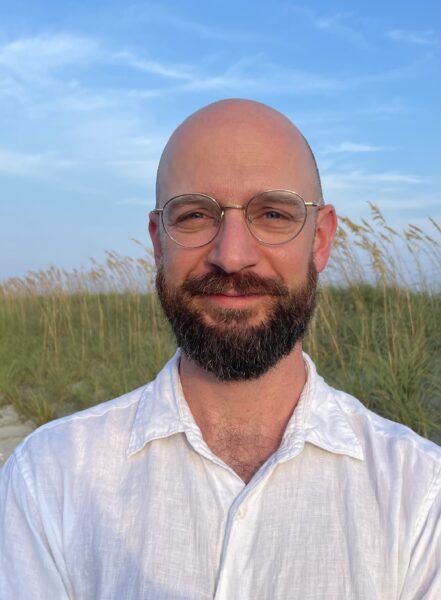
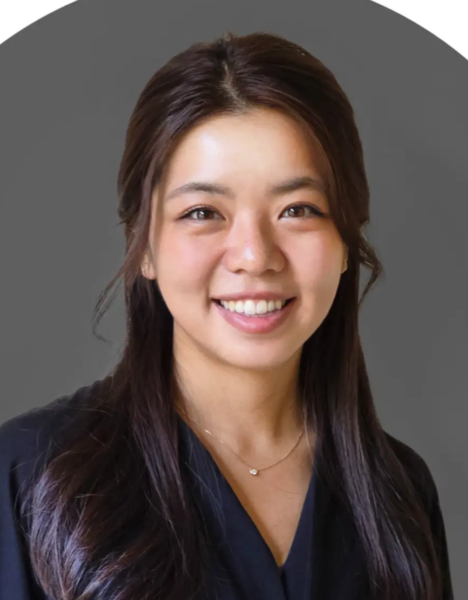
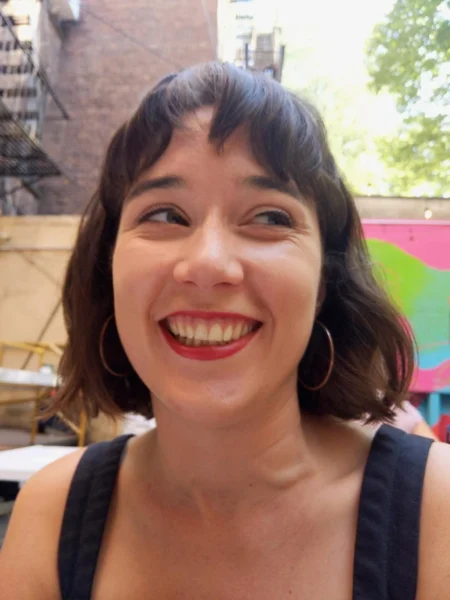



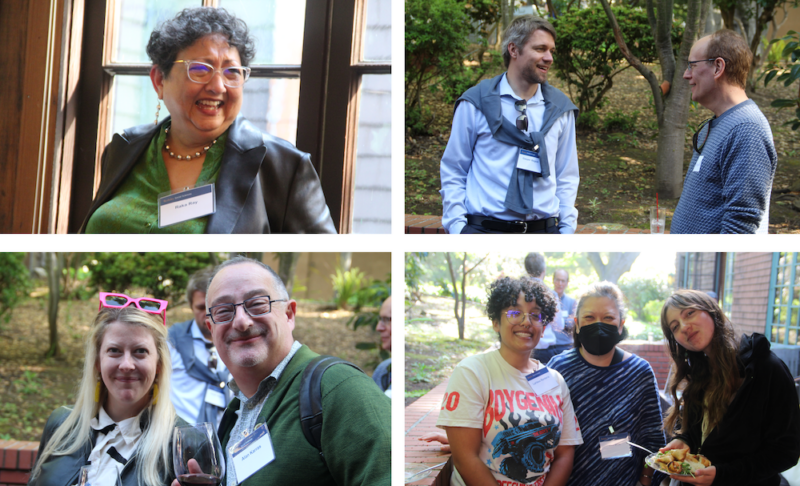
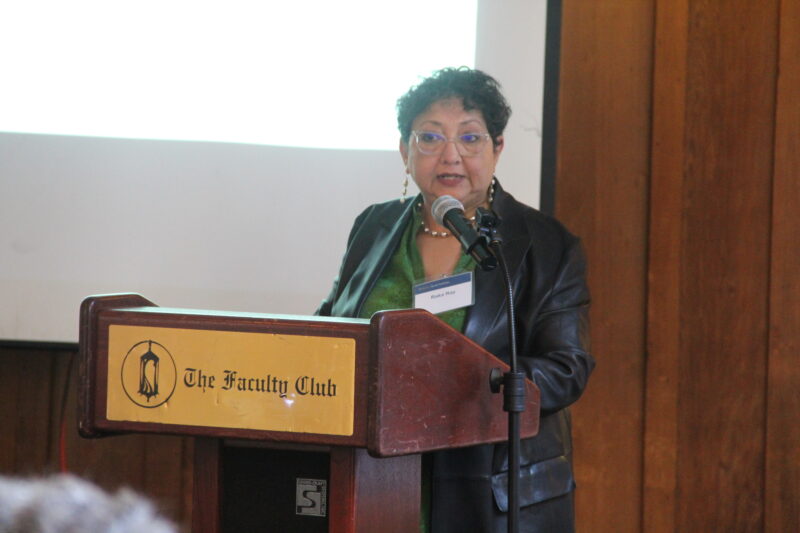
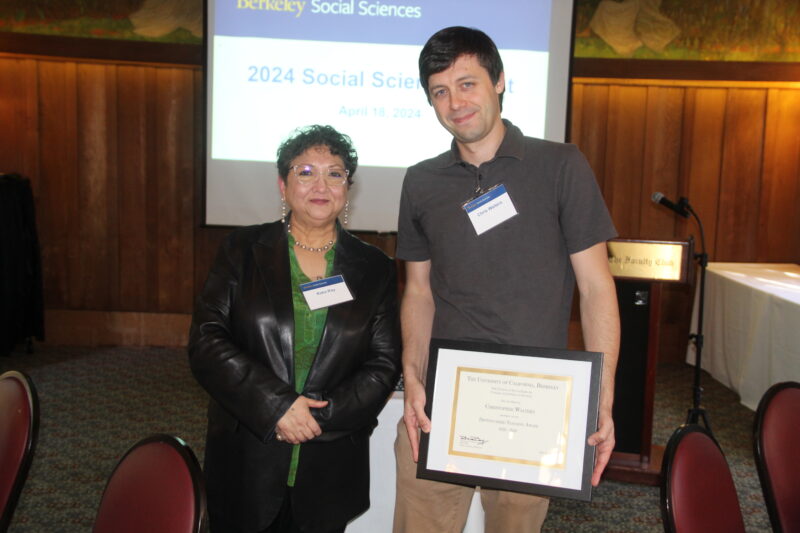
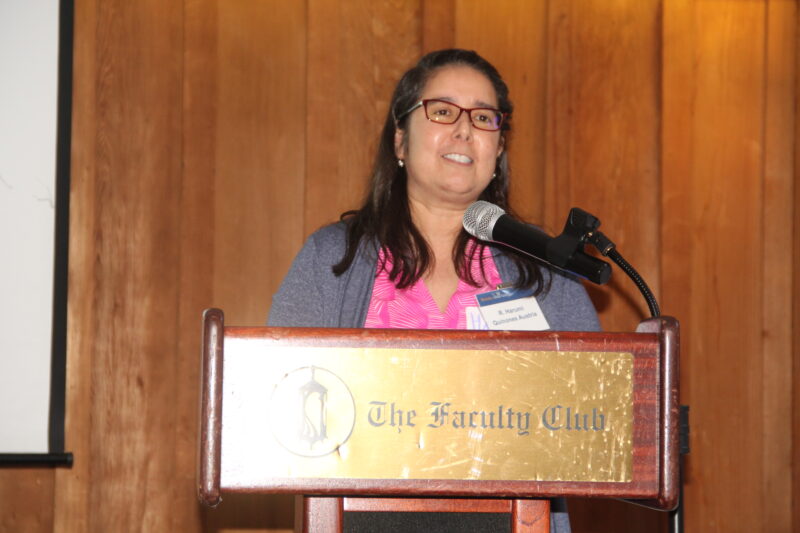
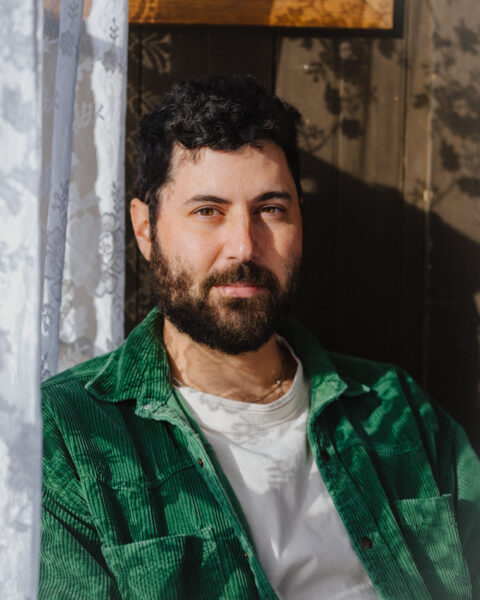 Daniel Gumbiner is a novelist and editor based in Oakland. His first book, The Boatbuilder, was nominated for the National Book Award. His new novel, Fire in the Canyon, was published by Astra House in 2023. He is the Editor of The Believer.
Daniel Gumbiner is a novelist and editor based in Oakland. His first book, The Boatbuilder, was nominated for the National Book Award. His new novel, Fire in the Canyon, was published by Astra House in 2023. He is the Editor of The Believer.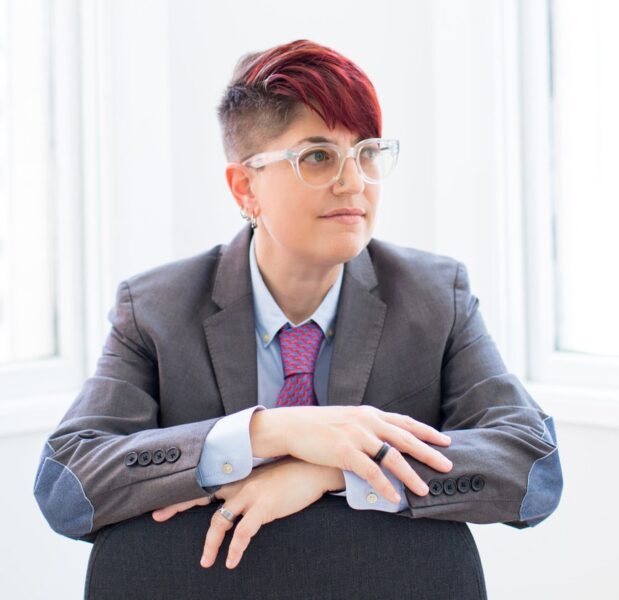 Annalee Newitz is a science fiction writer and science journalist. They are the author of nine books including, most recently, the science fiction novel The Terraformers. They are a contributing opinion writer at the New York Times, a columnist in the The New Scientist, and the co-host of an award-winning podcast, Our Opinions Are Correct.
Annalee Newitz is a science fiction writer and science journalist. They are the author of nine books including, most recently, the science fiction novel The Terraformers. They are a contributing opinion writer at the New York Times, a columnist in the The New Scientist, and the co-host of an award-winning podcast, Our Opinions Are Correct. Aaron Sachs is a professor of History and American Studies at Cornell University. He is the author of several books, most recently, Stay Cool: Why Dark Comedy Matters in the Fight against Climate Change (NYU Press, 2023).
Aaron Sachs is a professor of History and American Studies at Cornell University. He is the author of several books, most recently, Stay Cool: Why Dark Comedy Matters in the Fight against Climate Change (NYU Press, 2023). Rebecca Solnit is a writer, historian, and activist, and a graduate of the Berkeley School of Journalism. She has written more than twenty books, including Orwell’s Roses; Hope in the Dark; Men Explain Things to Me; A Paradise Built in Hell: The Extraordinary Communities that Arise in Disaster; and A Field Guide to Getting Lost. Together with Thelma Young Lutunatabua, Solnit edited the 2023 collection Not too Late: Changing the Climate Story from Despair to Possibility.
Rebecca Solnit is a writer, historian, and activist, and a graduate of the Berkeley School of Journalism. She has written more than twenty books, including Orwell’s Roses; Hope in the Dark; Men Explain Things to Me; A Paradise Built in Hell: The Extraordinary Communities that Arise in Disaster; and A Field Guide to Getting Lost. Together with Thelma Young Lutunatabua, Solnit edited the 2023 collection Not too Late: Changing the Climate Story from Despair to Possibility.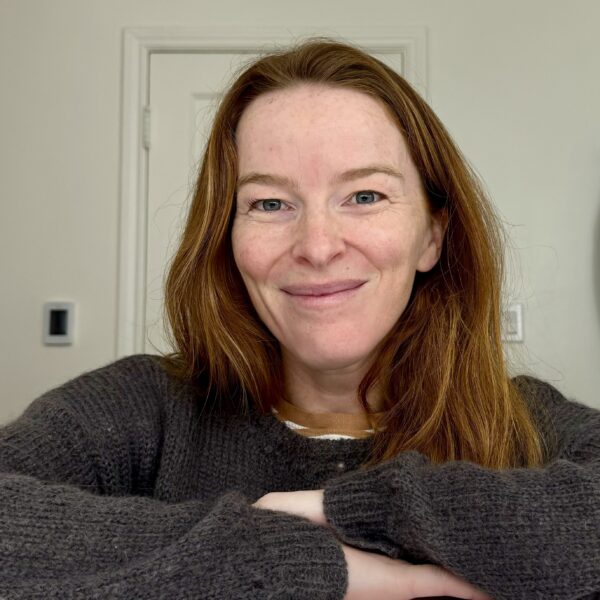 Rebecca Herman (moderator) is associate professor in the History Department at UC Berkeley and author of Cooperating with the Colossus (Oxford University Press, 2022). She is currently working on a book about the unlikely ban on mining in Antarctica, told through the stories of the military wives and children, artists, writers, activists, soldiers, and scientists who traveled South in growing numbers during the 1970s and 80s.
Rebecca Herman (moderator) is associate professor in the History Department at UC Berkeley and author of Cooperating with the Colossus (Oxford University Press, 2022). She is currently working on a book about the unlikely ban on mining in Antarctica, told through the stories of the military wives and children, artists, writers, activists, soldiers, and scientists who traveled South in growing numbers during the 1970s and 80s.
